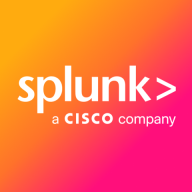

Splunk Observability Cloud and StackState compete in IT monitoring and analytics. Splunk has an edge in pricing and support, while StackState's rich features make it attractive for those seeking comprehensive functionality.
Features: Splunk Observability Cloud includes real-time monitoring, strong analytics capabilities, and seamless integration with cloud services. StackState provides advanced topology mapping, root cause analysis, and correlates infrastructure events with business outcomes. StackState's holistic view of IT environments benefits complex systems significantly.
Ease of Deployment and Customer Service: Splunk offers straightforward cloud-based deployment with robust customer support and extensive documentation for an easy onboarding process. StackState has a more tailored deployment with custom configurations, potentially requiring longer setup time but offering a personalized user environment.
Pricing and ROI: Splunk Observability Cloud offers a cost-effective initial setup with a pay-as-you-go model. StackState requires higher upfront investment, often providing justified ROI with long-term efficiency gains. Splunk's pricing is appealing, while StackState delivers detailed insights, significantly increasing ROI for businesses needing deep visibility into operations.
| Product | Market Share (%) |
|---|---|
| Splunk Observability Cloud | 1.8% |
| StackState | 0.1% |
| Other | 98.1% |

| Company Size | Count |
|---|---|
| Small Business | 20 |
| Midsize Enterprise | 10 |
| Large Enterprise | 43 |
Splunk Observability Cloud offers sophisticated log searching, data integration, and customizable dashboards. With rapid deployment and ease of use, this cloud service enhances monitoring capabilities across IT infrastructures for comprehensive end-to-end visibility.
Focused on enhancing performance management and security, Splunk Observability Cloud supports environments through its data visualization and analysis tools. Users appreciate its robust application performance monitoring and troubleshooting insights. However, improvements in integrations, interface customization, scalability, and automation are needed. Users find value in its capabilities for infrastructure and network monitoring, as well as log analytics, albeit cost considerations and better documentation are desired. Enhancements in real-time monitoring and network protection are also noted as areas for development.
What are the key features?In industries, Splunk Observability Cloud is implemented for security management by analyzing logs from detection systems, offering real-time alerts and troubleshooting for cloud-native applications. It is leveraged for machine data analysis, improving infrastructure visibility and supporting network and application performance management efforts.
The StackState AIOps platform is a unique offering as we combine:
- Topology – view all components and all their dependencies, on prem and cloud;
- Telemetry – see all metrics, events and logs per component, regardless of its source;
- Tracing – insights into end-to-end customer journey at code level;
- Time travelling – travel back to any moment in time.
We make this possible through our unique version graph database (the so called 4T model).
Again, all combined in one model, one view. Future ready as new technologies will be launched and will be included into StackState’s AIOps platform.
On top of this platform we offer state of the art AI capabilities for:
- Root Cause Analysis;
- Impact Analysis;
- Predictive Analytics;
- Anomaly detection;
- Remediation and Automation
This helps our customer to drastically reduce Root Cause Analysis (RCA) and Mean Time To Repair (MTTR). All together this makes StackState the only vendor today which makes AIOps a reality.
We monitor all IT Infrastructure Monitoring reviews to prevent fraudulent reviews and keep review quality high. We do not post reviews by company employees or direct competitors. We validate each review for authenticity via cross-reference with LinkedIn, and personal follow-up with the reviewer when necessary.